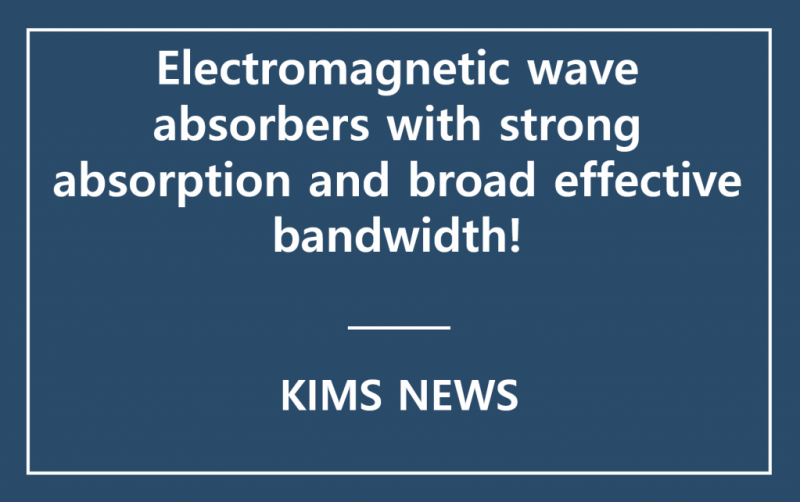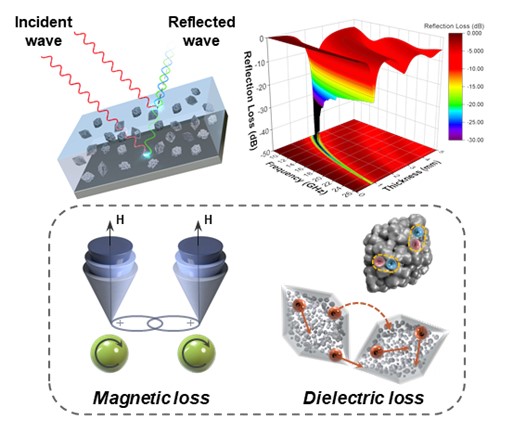R&D | The development of technology for electromagnetic wave absorption materials based on Metal-Organic frameworks(MOFs)
Page info
Date24-04-19 18:24 Hit30Link
Contents
|
Dr. Hee-jung Lee's research team from the Department of Functional Composites in Composites Research Division at KIMS has successfully developed a metal-organic framework(MOF) that enhances dielectric and magnetic loss in the gigahertz (GHz) high frequency band. They have compounded this MOF to create a high-performance, broadband absorption material.
Previous research focused on developing electromagnetic wave absorbing materials using highly conductive and dielectric materials. However, these materials faced challenges in achieving appropriate composite permittivity and permeability due to uneven mixing during the composite process. This resulted in increased the thickness and limited narrow-band absorption performance. The electromagnetic wave absorption material developed by Dr. Lee’s team not only outperforms existing materials in absorption but also exhibits high reflection loss and a wide absorption band at lower thicknesses. The ability of MOF to fabricate electromagnetic wave absorbing materials with various dielectric and magnetic losses addresses existing challenges and opens new possibilities.
The research team optimized the material composition to maximize electromagnetic wave absorption and synthesized the MOF using a wet method. After an optimal heat treatment process, the MOF was mixed with polyurethane to produce the electromagnetic wave absorbing material. The material demonstrated high absorption performance, reaching -52.29 decibels(dB) (99.999% absorption) at 10 gigahertz(GHz) and a thickness of 1.9 millimeters (mm). Notably, at a thinner thickness of 0.9 millimeters(mm), it exhibited broadband absorption performance up to 7.23 gigahertz (GHz), representing a significant improvement over materials developed by other countries.
The technology behind MOF-based electromagnetic wave absorbing materials has applications not only in stealth technology but also in various industrial fields such as electrical, electronic, autonomous driving, and communication. Its ability to prevent malfunctions caused by electromagnetic interference makes it essential for the next-generation IT field. Furthermore, it is expected to strengthen national defense capabilities, the defense industry, and contribute to revitalizing private companies.
Senior researcher Hee-jung Lee, emphasized the aim to apply MOF materials across industrial sectors and expand into environmental and bio fields through mass production, and expand into the environment and bio fields through mass production. She highlighted the potential for developing proprietary technology domestically and exporting it overseas in the future.
This research was funded by the Ministry of Science and ICT and published in the academic journal Advanced Composites and Hybrid Materials on February 5, 2024, with Dr. Jae-ryung Choi and student researcher Eun-yeong Cho as the first authors.
The research team is currently working on further developing electromagnetic wave absorption technology using MOF for higher ultra-high frequency bands. Additionally, they are actively researching the commercialization of high value-added industrial applications such as electromagnetic wave absorption, shielding, and heat dissipation by utilizing tailored MOF materials.


